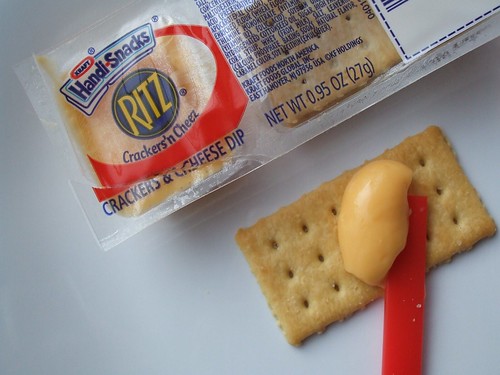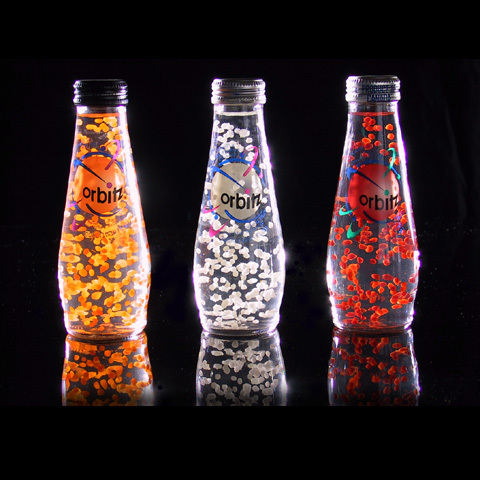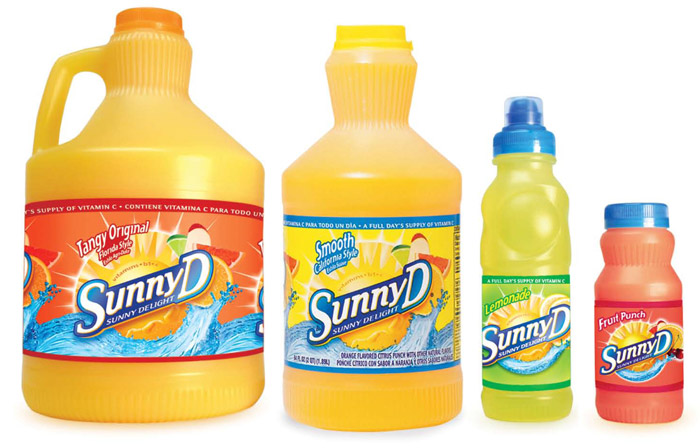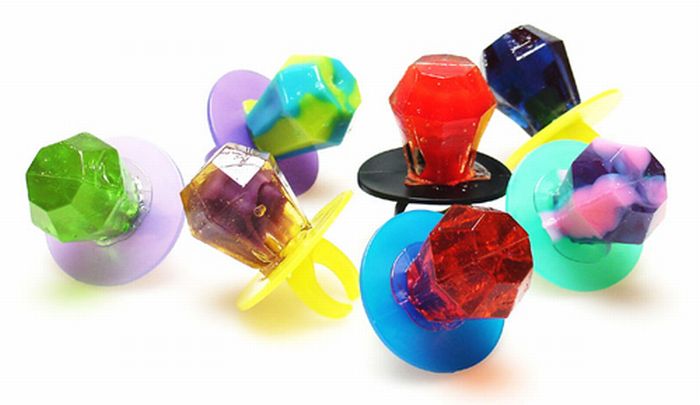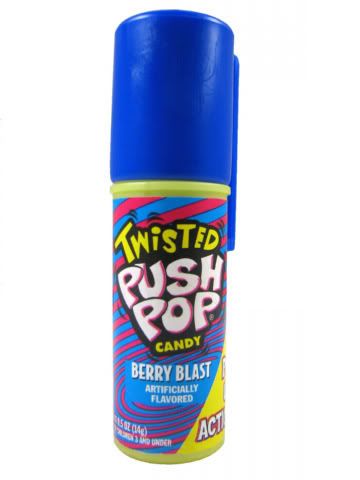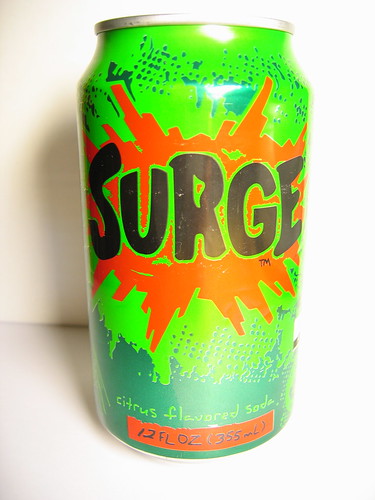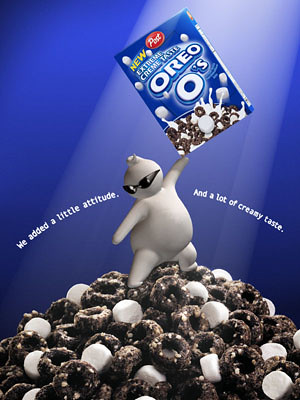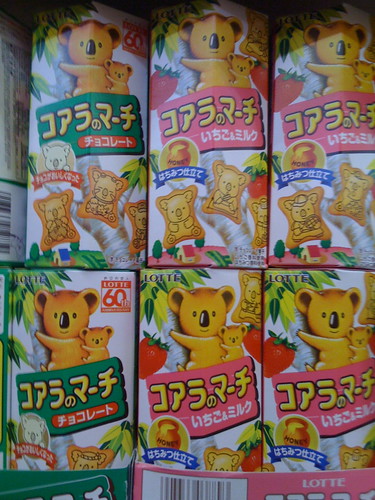
Here's a novel idea: take a vaguely berry-flavored candy, label it a fruit product, and market it to gullible parents who will delude themselves into believing it has a smidgen of fruit content. They could lull their guilty consciences into submission with self-reassurances that the products were labeled 100% natural. What? Corn syrup is natural. Well, corn is, at least. And I'm pretty sure you can locate that gelatin somewhere in an 100%, all natural horse hoof. Just turn left at the glue.
Heavily marketed at children during popular TV shows, these alleged "fruit" snacks became something of a lunchbox staple. It was a lot easier than cutting and tupperwaring real fruit. Plus, if we happened to lapse into nuclear fallout, these babies would assuredly survive. They're virtually indestructible, expiration-wise. I have yet to back up this conjecture with empirical evidence, but I hypothesize that if I found a Fruit Roll-Up from my childhood, it would probably taste just as fresh today as it would have in 1995. That's the magic of plastic for you.
While there were countless fruit snack options and shapes available, these were among the most coveted in the cafeteria:
Fruit String Thing
You really have to admire the vagueness of Betty Crocker's marketing department. Or at least the one that exists in this imaginary reformulation of their fruit snack christening process:
Executive 1: We've got this new product, see. It's a...thing. It resembles string.
Executive 2: Stop drilling, you've hit oil. Let's call it a day.
Executive 1: Do you think we should be more specific? What if people think it's made of real string?
Executive 2: Good point. Let's add the word "fruit" just to be on the safe side.
Fruit String Thing was a sort of bastard child of Fruit Roll-Ups and Twizzlers' Pull n' Peel. The taste wasn't particularly palatable, but its gimmickiness was just enough to make kids beg for it. I'm pretty sure I even convinced myself I liked the flavor, though really I just liked the unraveling aspect.
Gushers
First of all, that ad is terrifying. I couldn't sleep for weeks for fear I'd be zapped into a human-size semi-peeled banana. The image still haunts me. This near-banana experience, however, did not deter me from begging my parents to buy Costco-portioned cases of these liquid-filled fruit snacks. They just had a sort of pull over me. Maybe it was the hypnotically prismatic shape. Or, more likely, mind control serum in the mysterious filling. Whatever their tactic, it certainly was effective. They had us all convinced these were nothing short of a snack food revelation.
In retrospect, these are a bit troubling. What was that mysterious goo lining the interior of our beloved fruit snacks? It was sort of like a tart, tangy eyedropperful of fruit juice embedded within a fruity gel coating. By description alone these sound disgusting, so let me assure you that they absolutely are. I'm sorry, but I find something inherently disturbing about my food "gushing". I just don't feel comfortable using verb for my snack food that better describes the rush of blood from a wound. It's just not right.
To read the full Gushers post, click here
Fruit by the Foot
As an avid Fruit by the Foot and Bubble Tape fan, let me tell you: I like quantifiable, lengthy snack food. When I'm eating a cake or a pie, sure, it tastes good, but I feel a little empty without knowing precisely how it would measure up to a yardstick if unraveled. It just isn't quite the same.
For some reason, in the 90s it was totally acceptable to describe our snacks by their standard-measurement dimensions. The fact that it came with its accompanying joke and fun-fact printed wrapper was just a bonus. With found-in-nature flavors like tie-dye berry, how could you say no?
Fruit Roll Ups
Fruit Roll-Ups were launched in 1979 and enjoyed a heyday of popularity in the 80s and 90s. They were certainly mysterious in texture and content. The preservative-rich ingredient list was more than enough to befuddle our fragile young minds, particularly those amongst us who were in the lowest reading group.
Despite the questionable recipe, these things were a kids dream. They were sticky, they had punch-out shapes, you could put it over your face like a mask. Really, they thought of everything. Fruit Roll-Ups also stuck to themselves, so you could make a lumpy mound of gooey goodness and attempt to down in it a single gulp. Those were the good times.
Amazing Fruit
I'll be straight with you on this one. I was sold on commercial alone. Who could resist a gaggle of load-bearing gummy bears conga-ing to the maraca-shaking rhythms of the "It's Amazing Fruit!" chant? Who, I ask you?
It's never a good sign if while the voice-over announces natural ingredients, a fine-print caveat appears onscreen admitting they're actually made up of natural and artificial flavors. Which means, in short, there's pretty much no fruit in there. On the other hand, there are bears, so it's sort of a draw overall. I'm leaning toward bears, myself.
There's no reality-grounded explanation that can tell us exactly why we so loved these artificially flavored, plastic-scented fruit snacks. Even more perplexing is why our parents thought packing us chock full of concentrated sugar was a wise idea. Then again, this was the same generation of parents who sent us off to school toting Lunchables. Whether they were extraordinarily lazy or just not particularly health-conscious, I'm sure kids today are kicking themselves for not being born a decade earlier. They could have had String Thing.






